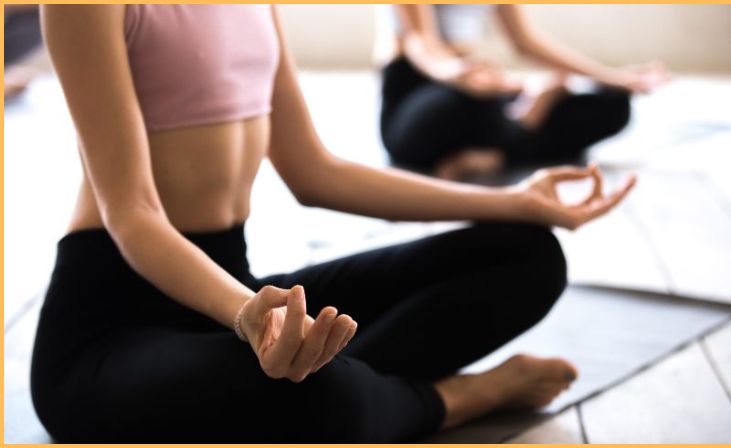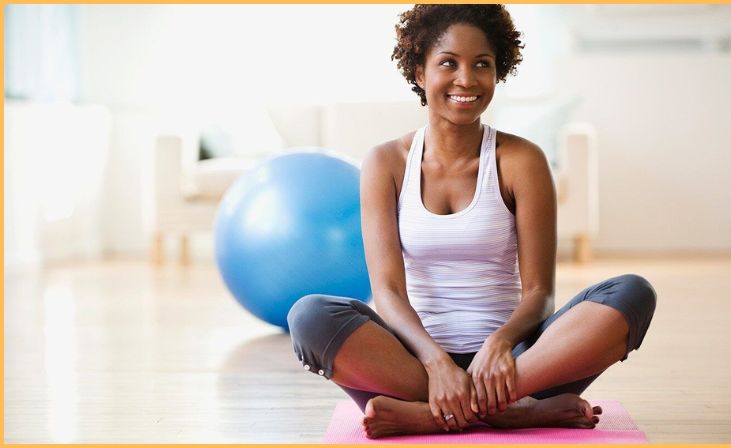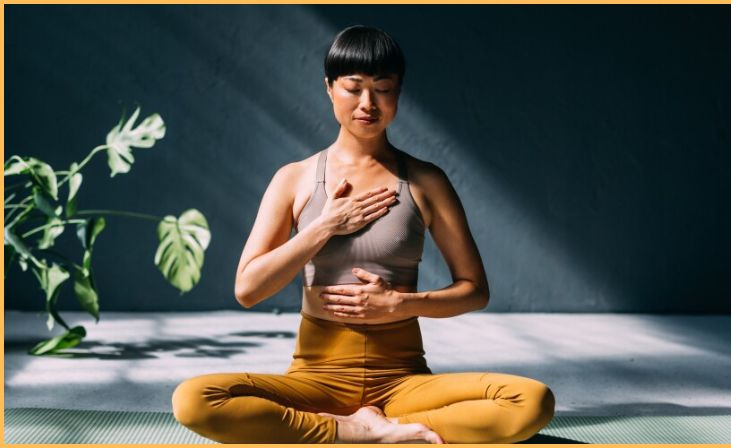Benefits Of Yoga – Yoga, an ancient practice with roots in India, has evolved into a global phenomenon renowned for its multifaceted benefits. Beyond a system of physical postures, yoga encompasses a holistic approach to well-being, seamlessly blending the harmony of mind, body, and spirit.
Its popularity has surged as people seek not only physical fitness but also mental and emotional balance in today’s fast-paced world.
Defined by controlled movements, intentional breathing, and mindfulness, yoga offers a diverse array of advantages, ranging from increased flexibility and strength to stress reduction and improved cardiovascular health.
This outline explores the comprehensive benefits of yoga, delving into its transformative impact on various aspects of our physical, mental, and social health.
As we delve into the nuanced layers of yoga’s influence, we uncover a timeless practice that transcends cultural boundaries, offering a path to wellness for individuals of all ages and fitness levels.
Definition of Yoga

Yoga is an ancient spiritual and philosophical discipline originating from India, encompassing a diverse range of practices that unite the mind, body, and spirit. Rooted in the Sanskrit word “yuj,” meaning to yoke or unite, yoga seeks to establish harmony within oneself and with the broader universe.
It involves physical postures (asanas), controlled breathing (pranayama), meditation, and ethical principles to promote overall well-being. Beyond a mere physical exercise, yoga fosters a holistic approach to health, encouraging self-awareness, mental clarity, and spiritual connection.
It has become a global practice, celebrated for its transformative impact on physical fitness, mental balance, and a profound sense of inner peace.
Also, Read – Effective SARMs Stacks for Muscle Building
Benefits Of Yoga
Improved Flexibility

Yoga enhances flexibility through a variety of poses that stretch and lengthen muscles. Regular practice gradually increases joint range of motion, fostering improved flexibility. This increased suppleness contributes to better overall mobility and helps prevent injuries by promoting a wider range of motion in daily activities.
Increased Strength
Yoga builds strength by engaging various muscle groups through static and dynamic poses. Weight-bearing postures, like planks and warrior poses, promote muscle endurance, particularly in the core, arms, and legs.
The controlled transitions between poses require muscle activation, contributing to overall strength development.
Unlike traditional strength training, yoga emphasizes functional strength, enhancing stability and support for the body. Consistent practice leads to improved muscle tone and resilience.
Stress Reduction

Yoga is a powerful stress-reduction tool, integrating physical postures, mindful breathing, and meditation. The practice activates the parasympathetic nervous system, inducing a relaxation response that counteracts the body’s stress-related “fight or flight” mode.
Deep, intentional breathing calms the mind and reduces cortisol levels, alleviating stress. Mindfulness in yoga encourages present-moment awareness, helping practitioners let go of worries about the past or future.
The emphasis on mental stillness and relaxation fosters a tranquil state, promoting emotional balance. Regular yoga practice thus equips individuals with effective techniques to manage and reduce stress in their daily lives.
Enhanced Balance and Coordination
Yoga cultivates enhanced balance and coordination through a variety of poses that challenge stability. Standing postures like Tree Pose and Warrior III require focused concentration, strengthening neural connections related to balance.
The engagement of core muscles in many poses contributes to better overall coordination. As practitioners progress, they develop proprioception—the sense of body awareness in space. This heightened awareness, combined with the intentional and controlled movements in yoga, improves coordination.
Over time, the mind-body connection established through yoga translates to increased stability and better coordination in various activities outside the yoga studio.
Also, Read – Balance Exercises for Seniors
Better Posture

Yoga promotes better posture by emphasizing body awareness and alignment. The practice involves poses that encourage a neutral spine, open chest, and engaged core, fostering an upright and balanced posture.
Regular yoga practice helps correct imbalances, strengthens the muscles supporting the spine, and prevents slouching. Mindful awareness of body alignment during poses translates into improved posture in everyday life.
As the body becomes more accustomed to the correct alignment, individuals find themselves naturally maintaining a more upright and aligned posture, reducing the strain on the spine and contributing to overall musculoskeletal health.
Improved Breathing
Yoga enhances breathing through focused techniques called pranayama. Emphasizing conscious, controlled breath, yoga improves lung capacity and respiratory function. Deep diaphragmatic breathing in poses promotes oxygenation of the blood, reducing stress and promoting relaxation.
Pranayama exercises, such as alternate nostril breathing, enhance the efficiency of the respiratory system, calming the nervous system and improving overall well-being.
The integration of breath with movement in yoga poses encourages a mindful connection to the breath, fostering awareness of breathing patterns. Over time, this heightened awareness and intentional breathing extend beyond the mat, positively impacting daily life and contributing to a sense of balance and calm.
Strengthened Immune System

Yoga contributes to a strengthened immune system by promoting overall health and well-being. The practice reduces stress, a key factor in immune function, through relaxation techniques and mindful breathing.
Stress reduction, in turn, helps regulate the immune response. Certain yoga poses stimulate the lymphatic system, supporting the body’s natural defense mechanisms. Additionally, the practice’s focus on holistic health, including proper nutrition and adequate sleep, further bolsters immune function.
While yoga alone is not a substitute for other healthy lifestyle choices, its positive impact on stress levels and overall wellness can play a role in fortifying the immune system against illnesses and promoting a resilient, balanced body.
Increased Mindfulness and Focus
Yoga enhances mindfulness and focus by encouraging present-moment awareness. The practice emphasizes tuning into the sensations of the body, breath, and surroundings, fostering a heightened state of mindfulness.
Through concentration on specific poses and the breath, practitioners develop focus and mental clarity. Meditation and mindful breathing techniques in yoga promote a calm, centered mind. The intentional, non-judgmental awareness cultivated during practice extends beyond the mat, improving the ability to concentrate in daily activities.
Over time, yoga equips individuals with tools to navigate distractions, enhance cognitive function, and embrace a more mindful approach to both physical and mental aspects of life.
Pain Relief

Yoga provides effective pain relief by addressing physical and mental aspects of discomfort. Gentle stretches and poses improve flexibility, alleviate muscle tension, and enhance joint mobility, reducing chronic pain such as lower back or arthritis-related discomfort.
The focus on mindfulness and controlled breathing helps manage pain perception, fostering a relaxed state. Regular practice can mitigate headaches and migraines through stress reduction. Yoga’s holistic approach promotes awareness of bodily sensations, empowering individuals to identify and alleviate sources of pain.
It’s essential to consult healthcare professionals for personalized advice, but many find yoga to be a complementary and non-invasive tool for managing and even alleviating various types of persistent pain.
Emotional Well-being

Yoga significantly contributes to emotional well-being by integrating physical postures, breathwork, and mindfulness. The practice reduces symptoms of anxiety and depression through relaxation and stress reduction.
Mindful movement and meditation enhance self-awareness, fostering a positive outlook on life. The emphasis on the mind-body connection in yoga encourages emotional balance, helping individuals navigate and regulate their emotions more effectively.
Regular practice provides a sanctuary for self-reflection and emotional processing. The community aspect of group classes can also offer a supportive environment. Overall, yoga is a powerful tool for promoting emotional resilience, self-compassion, and a sense of inner peace.
Conclusion
In conclusion, yoga’s profound impact on physical, mental, and social well-being makes it a timeless practice for modern life. From enhanced flexibility to stress reduction and a sense of community, yoga offers a holistic approach to health.
By integrating mindful movement, intentional breathing, and spiritual awareness, it provides a transformative journey toward balance and harmony.
As individuals of all ages and backgrounds embrace yoga, its universal principles continue to empower a diverse global community in their pursuit of lifelong wellness and self-discovery.
FAQs
Yoga reduces stress through relaxation techniques, boosts mental focus and concentration, and manages emotions, fostering a positive impact on mental and emotional well-being.
Yes, yoga incorporates controlled breathing techniques (pranayama) that increase lung capacity, improve respiratory function, and contribute to overall respiratory efficiency.
Absolutely. Yoga supports heart health by lowering blood pressure, enhancing circulation, and improving cardiovascular fitness through increased endurance and heart rate variability.

